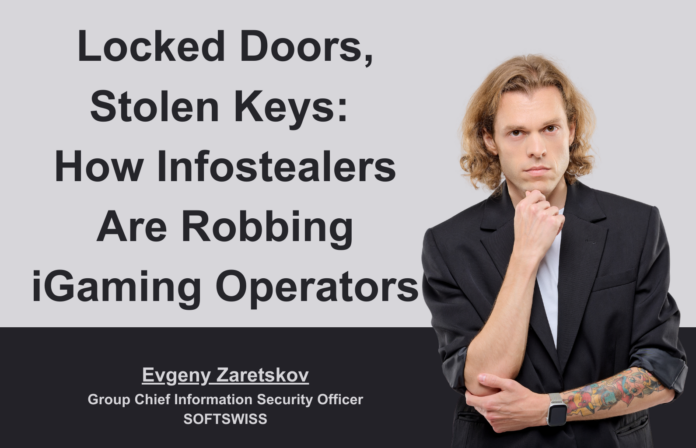
Imagine this: Your back-office admin account, the keys to your iGaming kingdom, sold for a mere $10 on a dark web forum. The buyer? A cybercriminal who didn’t need to breach your network — they simply purchased your credentials from an infostealer log leaked weeks ago. This isn’t a hypothetical scenario but a growing reality in today’s digital landscape.
According to the Check Point Cyber Security Report 2025, 90% of breached companies had previous corporate credentials leaked in a stealer log — a stark reminder that once login details fall into the wrong hands, attackers gain an easy foothold. For online casinos, sports betting platforms, and other digital gambling entities, the threat isn’t just about stolen player data — it’s about cybercriminals gaining control over the very systems that power your operations.
Infostealers Explained: The Silent Threat on Every Device
Infostealers are stealthy malware programs designed to exfiltrate sensitive data from infected endpoints — laptops, desktops, or mobile devices. Unlike ransomware, which often announces itself with file encryption and demands for payment, infostealers operate discreetly. They focus on:
- Privileged Credentials: Usernames, passwords, and cryptocurrency wallet data stored on compromised devices.
- Browser Artifacts & Session Cookies: Saved logins, authentication tokens, and cookies that can yield direct access to back-office or management dashboards.
- Local Files & Configuration Data: Screenshots, system logs, or confidential documents that reveal network architectures and critical server details.
Once harvested, these “digital keys” are often sold on dark web marketplaces or used immediately to breach corporate networks – posing a significant threat to iGaming operators who rely on continuous uptime and uncompromised trust.
Picture 1. An automated alert from a Dark Web Monitoring Platform, revealing stolen corporate credentials attributed to an infostealer breach
Why iGaming Operators Are Prime Targets
Historically, cybersecurity efforts in the iGaming sector have centred on safeguarding player information and payment transactions. However, modern infostealer campaigns now set their sights on core back-office infrastructure. A single compromised device — be it a personal laptop used for remote admin tasks or an unsecured corporate endpoint — can lead to:
• Unauthorized Privileged Application Access
Attackers can gain direct control over administrative interfaces, manipulate odds, siphon funds, or disrupt live games. With privileged credentials, they effectively become “insiders,” potentially accessing everything from back-office casino portals to payment systems.
• Operational Downtime & Ransomware Threats
Using stolen credentials, intruders can deploy secondary malware that halts critical services — or even encrypt entire production environments — demanding a ransom to restore operations. Every minute of downtime costs operators significant revenue and can permanently scar their reputation.
• Exploiting Crypto Payment Integrations
Many iGaming operators now allow cryptocurrency deposits and withdrawals for speed and convenience. While these gateways can enhance user experience, they also create new attack vectors. Once infostealers grant criminals privileged access, bad actors can directly tap into crypto payout modules — funneling funds to external wallets in near real-time. Because blockchain transactions are decentralized and harder to trace or reverse, these illicit transfers often vanish without leaving much of a trail — making iGaming operators an enticing target for swift, untraceable profit.
• Damage to Trust
Even a brief intrusion erodes player confidence and invites regulatory scrutiny. In a highly competitive market like iGaming, trust and brand integrity are paramount for sustaining user loyalty.
Picture 2. Information extracted by the infostealer — encompassing all stored logins/passwords, session cookies, system details, and even desktop screenshots from the infected device
High-Stakes Incidents: Infostealers in Action
Because infostealers frequently harvest credentials from personal devices — well beyond an operator’s internal security controls — the direct link between a “breach” and the actual malware can remain unclear. If the operator itself wasn’t initially infected, investigators may see only a “credential-stuffing” attempt, even though logs from infostealer-infected endpoints are the real source. Below are two illustrative cases from the near past, showing how these stealthy attacks can escalate into major compromises.
Crypto Sector — Binance Infostealer Attack (May 2023)
In May 2023, Binance — one of the world’s largest cryptocurrency exchanges — detected an infostealer malware campaign aimed at its internal employee endpoints. Attackers tried to leverage stolen credentials to infiltrate corporate systems. While Binance successfully contained the threat, this incident proves that even major industry players can fall prey to stealthy credential-harvesting malware.
iGaming Sector — DraftKings Compromise via Infostealer Logs (November 2022)
In November 2022, DraftKings — an American sports betting and iGaming operator — revealed that attackers accessed around 68,000 customer accounts, leading to unauthorized withdrawals of roughly $300,000. Initially framed as “credential stuffing,” subsequent investigations (and BleepingComputer coverage) unearthed infostealer “logs” commonly sold on dark web marketplaces. The compromised credentials originated from users’ infected personal devices — highlighting how infostealers can wreak havoc even if the operator’s core systems remain unbreached.
Picture 3. SIEM event triggered by an HIBP alert about a corporate account detected in an aggregated database of leaked credentials
The SOFTSWISS Playbook: Infostealer Defense Strategies
At SOFTSWISS, we view infostealers as a stealthy, persistent threat demanding proactive defenses across the entire iGaming infrastructure. Drawing on both our hands-on experience and leading cybersecurity research, we’ve developed a comprehensive approach to intercept credential-harvesting malware before it can cause major disruptions. Below are our key recommendations, all on a single level, for effectively battling infostealers:
1. Restrict High-Level Access
Limit entry to core casino back offices, payment gateways, and other critical corporate infrastructure strictly to essential personnel. Require connections to sensitive resources to pass through secure network controls — such as a VPN or Zero Trust framework — ensuring that only verified users and endpoints gain access. Regularly audit permissions, rotate passwords, and disable dormant accounts to shrink your attack surface.
2. Combine MFA with Endpoint & Network Checks
Multi-factor authentication (MFA) is vital but not a panacea: if a device is already compromised, attackers may intercept tokens or one-time passcodes. Complement MFA with robust endpoint security (antivirus, disk encryption, patch management) and network-level policies, such as Network Access Control (NAC). This ensures all corporate or personal devices pass compliance checks (e.g., updated malware definitions, and recent security patches) before connecting to privileged resources.
3. Mandate Secure Devices for Admin Tasks
Prefer corporate-owned, security-hardened laptops and mobile devices for administrative operations. If personal endpoints must be used, enforce strict requirements: full-disk encryption, active malware protection, and routine scans. The aim is to prevent infostealers from hitching a ride through personal software or browsing habits.
4. Enable Real-Time XDR Monitoring
Deploy an Extended Detection and Response solution that correlates endpoint activity, network traffic, and user behavior. By analyzing data from multiple sources in real time, XDR can detect subtle signs of infostealer infiltration — blocking attackers from moving laterally across your environment.
5. Deploy Dark Web Monitoring
Leverage professional services — such as Flare, Cyble, or SOCRadar — to scan for leaked credentials tied to your domain. Proactive dark web checks provide near-real-time alerts when corporate logins surface on underground marketplaces.
6. Adopt SOAR for 24/7 Incident Response
Integrate Security Orchestration, Automation, and Response (SOAR) system with your SIEM feeds to automatically isolate infected endpoints, reset compromised accounts, and alert relevant staff. Around-the-clock incident management is crucial for containing threats quickly.
7.Promote Safe Software & Device Practices
Train employees to avoid downloading untrusted apps, browser extensions, and software from unofficial sources. Emphasize the dangers of blending personal and corporate usage on a single device, given how swiftly infostealers can spread.
8. Conduct Infostealer-Focused Training
Schedule regular sessions highlighting how stealthy these campaigns can be — demonstrating real attack logs and typical infection vectors. Encourage staff to report unusual system behaviours (slow performance, unexpected pop-ups) that might indicate hidden malware.
9. Engage in Industry-Wide Collaboration
At SOFTSWISS, we actively share anonymized metrics, threat analyses, and defensive measures with our iGaming peers. By uniting against infostealers — exchanging timely intelligence and lessons learned — we strengthen the entire sector’s resilience.
By adopting these strategies, iGaming operators can substantially minimize the risk of infostealer-driven breaches. At SOFTSWISS, we focus on safeguarding our clients’ operations by continuously refining our approach — adding new layers of defense and unique solutions against stealthy credential-harvesting attempts. Through this holistic commitment, we ensure these covert attacks are thwarted before they disrupt business, allowing our partners to concentrate on delivering a world-class iGaming experience.
By continuously refining the approach with advanced threat intelligence, real-time monitoring, and comprehensive incident management, it becomes possible to detect and neutralize these covert attacks before they disrupt business, empowering partners to focus on delivering a world-class iGaming experience.
Infostealers operate in complete silence, harvesting the very credentials that power digital infrastructure. Only through proactive dark web monitoring and advanced threat intelligence can it be possible to stay one step ahead of attackers — ensuring defenses evolve as rapidly as the threats.
Together, by uniting best practices, cutting-edge intelligence, and open industry collaboration, these covert attacks can be contained — before they strike the real jackpot.




















